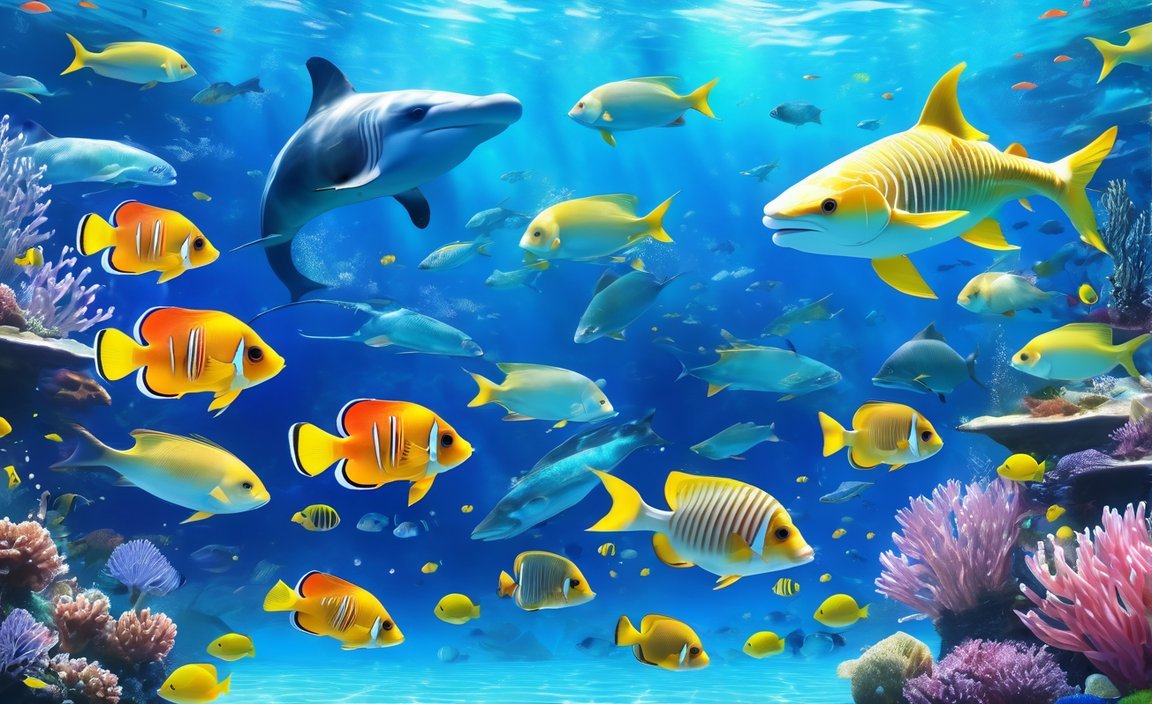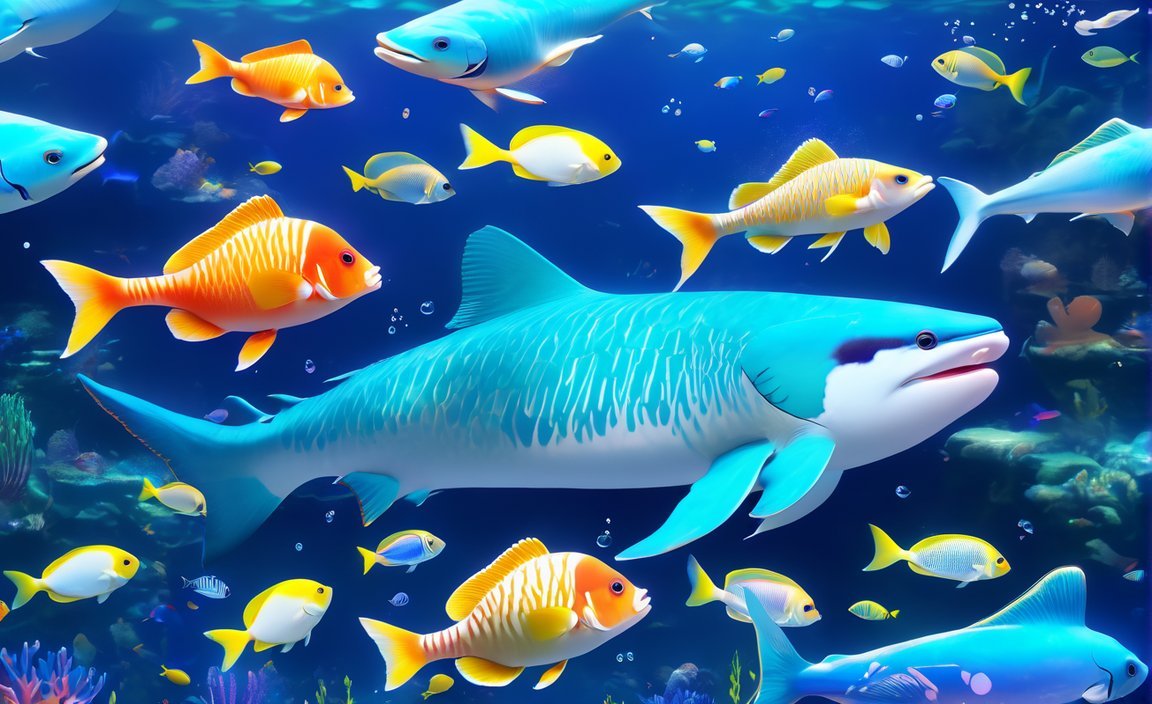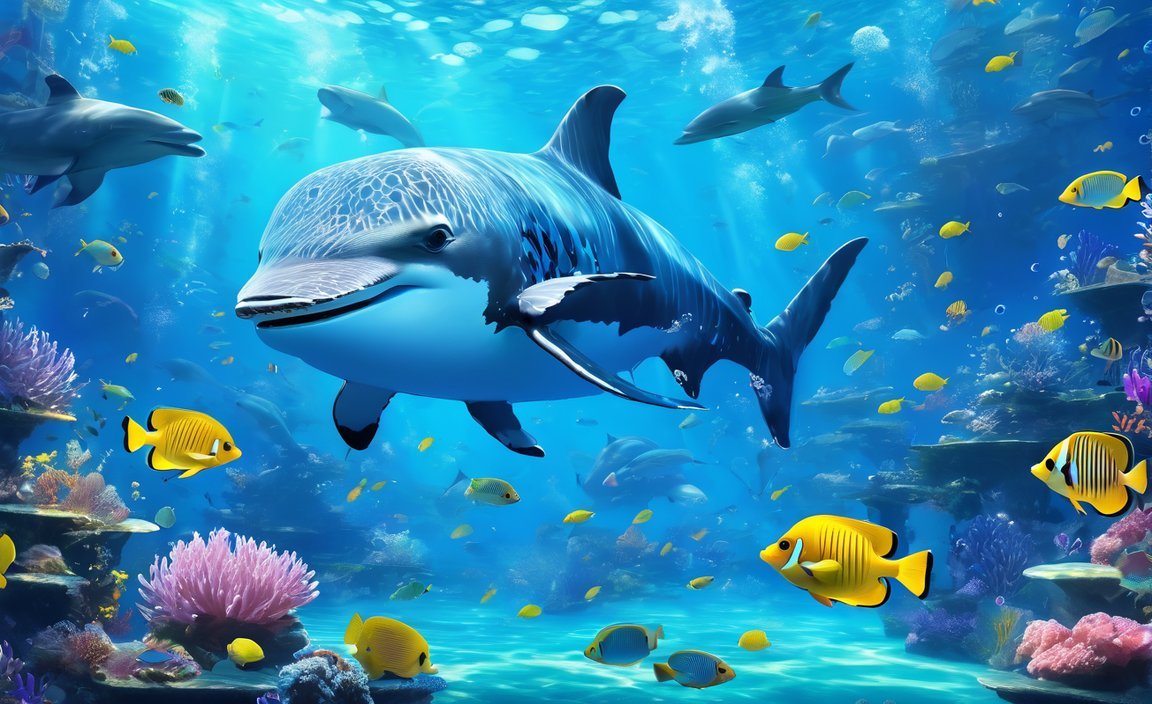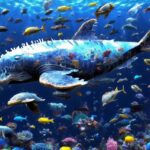The vast expanse of our oceans holds a mesmerizing world teeming with life, from microscopic plankton to colossal whales. These aquatic animals have adapted to their underwater environment in remarkable ways, showcasing the incredible diversity and resilience of life on Earth. Let’s embark on a journey into the depths of the ocean and uncover five fascinating facts about these marine marvels.
1. The Ancient Survivors – Jellyfish

These translucent, bell-shaped creatures have graced the oceans for over 650 million years, predating both dinosaurs and sharks. Jellyfish lack a centralized brain and heart, yet they have managed to thrive in the ever-changing marine environment. Their simple yet effective anatomy allows them to capture prey, move gracefully through the water, and even reproduce without the need for complex organs.
2. The Electric Powerhouse – Electric Eel
Imagine an underwater creature capable of generating enough electricity to power ten light bulbs. That’s precisely what the electric eel can do. These elongated fish possess specialized cells called electrocytes that produce high-voltage shocks, primarily used for defense and hunting. Their powerful electrical discharge can even stun or kill much larger predators.
3. The Blue-Blooded Marvel – Octopus
Octopuses are among the most intelligent invertebrates, renowned for their problem-solving abilities and camouflaging prowess. But did you know that these eight-armed wonders have blue blood? Unlike mammals and other vertebrates that carry red blood cells, octopuses have hemocyanin, a copper-based protein that gives their blood its distinctive blue hue. Hemocyanin efficiently transports oxygen in cold, low-oxygen environments, making it perfectly suited for the deep ocean.
4. The Gender-Switching Bivalves – Oysters
These culinary favorites have a hidden secret: they can change their gender multiple times throughout their lives. Oysters are typically born as male, but they can switch to female if conditions are favorable for reproduction. This remarkable ability ensures the continued survival of oyster populations and contributes to the health of marine ecosystems.
5. The Fatherly Seahorses

In a reversal of traditional roles, seahorses are the only animals where the male, not the female, gives birth and cares for their young. After mating, the female deposits her eggs into a pouch on the male’s abdomen, where they fertilize and develop. The male seahorse then carries the developing embryos for weeks, providing them with nutrients and protection until they are ready to emerge into the world.
These five intriguing facts represent just a glimpse into the vast and captivating world of aquatic animals. Each creature, from the tiniest plankton to the largest whale, plays a vital role in maintaining the delicate balance of marine ecosystems. As we continue to explore the depths of our oceans, we are sure to discover even more fascinating wonders that will deepen our understanding and appreciation of the underwater world.
Did you know that 5 interesting facts about snapping turtles include their incredible lifespan and unique hunting techniques? Discover more about these fascinating aquatic creatures!
FAQ
Q1: How long have jellyfish been around?
A1: Jellyfish have been around for over 650 million years, predating both dinosaurs and sharks. They are incredibly resilient creatures that have adapted to changing ocean conditions over time.
Q2: How much electricity can an electric eel produce?
A2: An electric eel can produce enough electricity to light up to 10 electric bulbs. This powerful shock is used for defense and hunting.
Q3: What color is octopus blood?
A3: Octopus blood is blue due to the presence of hemocyanin, a copper-based protein that carries oxygen. Hemocyanin is more efficient at transporting oxygen in cold, low-oxygen environments, making it well-suited for the deep ocean.
Q4: Can oysters change their gender?
A4: Yes, oysters are sequential hermaphrodites, meaning they can change from male to female and back again multiple times throughout their lives. This ability ensures that there is always a balance of males and females in the population for successful reproduction.
Q5: Which animal is responsible for giving birth to and caring for their young?
A5: Seahorses are the only animals where the male, not the female, gives birth and cares for their young. After mating, the female deposits her eggs into a pouch on the male’s abdomen, where they fertilize and develop. The male seahorse then carries the developing embryos for weeks, providing them with nutrients and protection until they are ready to emerge into the world.















